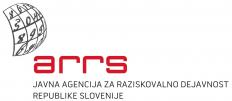Research on Slovenian Folk Culture in Folklore Studies and Ethnology
Principal Investigator at ZRC SAZU
Marjetka Golež Kaučič, PhD-
Original Title
Folkloristične in etnološke raziskave slovenske ljudske duhovne kulture
Project Team
Urša Šivic, PhD, Mojca Kovačič, PhD, Drago Kunej, PhD, Rebeka Kunej, PhD, Marija Klobčar, PhD, Anja Serec Hodžar, MA, Marjeta Pisk, PhD, Marjeta Pisk, PhD-
Programme ID
P6-0111
-
Duration
1 September 2009–31 December 2013 -
Financial Source
ARRS

Folkloristic and ethnological research on Slovenian folk spiritual culture are addressing main issues of both creative (involving also individuals with their life stories) and functional (involvement in customs and feasts) communication of folk song, music and dance, and at the same time also refering to social elements of spiritual culture and its diversity in structure, functionality, poetics, life and historical context also in relationship with high art. Folk spiritual culture is fundamental for research of originality of Slovenes and their cultural diversity in context of neighbouring ethnicities or nations, it determines and identifies us more than universal or high culture, with its research considering general cultural aspects and concrete ways of living, showing specific methodology of research of syncretic phenomenon. All aspects of research: functional, artistic, creative and social can emerge as interacting oposition or as mutual study of life of different layers of population. The research, in its core, systematicaly investigates the widest area of folk spiritual culture by field research, gathering and critical processing of sources and material, systematization, cataloging and digitization of field and archive material for preservation and increase of value of folk spiritual culture, creative transformations of folklore, customs and fiests, life stories. The main goal of research programme, which involves interdisciplinary approach, is to present gathered material as specific creativity with its own internal logic and specific life, integrated in social scope and emphasized with aspects of those who continue to carry these elements in future. Individual goals are: publishing of fundamental collection of Slovenian Folk Songs (Corpus SLP - 12 books); publishing of all individual thematicaly edited collections, publishing of research on dance tradition and influence of new aspects of folklorism on dance tradition, publishing of ethnomusicological material, vocal and instrumental tradition, preservation and digitization of all audio and manuscript collections, so called ethnical legitimation of Slovenians, which serve as a base for work and library as a source for research.
Individual thematic complex of research of the programme are: Digitization of OSNP archive and other collections, Transformation of Slovene folk songs in popular music after 1990, Folk music of Istria, Dance tradition in Slovenia and influence of folklorism on Slovenian dance tradition, Issues of social problematics in song tradition of Tuhinja valley, Folklore and literature - relationships, corelations, oppositions in novels and short stories, Animal images in Slovenian folk songs, Relationships between slavistics and folkloristics, Electroacustic research of ethnomusicological material and special aspects of their preservation and digitization, History and theory of folkloristics - selected articles, etc.
| 1. GOLEŽ KAUČIČ, Marjetka. Slovenian Folk Song and Narrative Tradition The author presented the history of gathering and researching of Slovenian folk song and narrative tradition with special regards on its characteristics, genres, forms and typology and also relationships with literature. This is the first treatise, published in Russian language, which treats Slovenian song and narrative folklore in whole. Bibliographic reference (COBISS.SI-ID): 31859245 |
| 2. KUNEJ, Rebeka, Old in a new manner: Folk dance heritage and folk dance groups. The article describes what happened to folk dance when folk dance groups transformed it from its traditional environment to the stage. In this process, the folk dance heritage was either actively or passively transformed, and subjected to the principles of public stage performance. Based on a case study of the folk dance štajeriš (Steierisch), the article describes what changes occurred, who influenced them most, and how to best protected this segment of living heritage. Bibliographic reference (COBISS.SI-ID): 32166189 |
| 3. “Impressions from a new land with a little-known language”: collecting, recording and research of Slovenian folk songs by the J. E. Lineva. The paper presents and analyzes the collecting and sound documentation carried out by the Russian folklorist J. E. Lineva, who in 1913 spent some time in Slovenia, recording in Gorenjska and Bela krajina considerable of Slovene folk songs. She made extensive use of phonograph in her research and collecting activities and some consider her the greatest Russian folklore specialist of the late 19th and early 20th century. Her successful work was familiar to many contemporary researchers into the folk music of the time, but is now almost forgotten. Bibliographic reference (COBISS.SI-ID): 43127394 |
| 4. »And the Carolers sing at Christmas …« : Trubar's Interpretation of Folk Song and Popular Overviews of folk-song heritage consider Primož Trubar’s transcription of the beginning of a Christmas carol in his Katekizem z dvema izlagama (Catechism with Two Commentaries) to be the first transcription of a Slovenian folk song. The context reflects a judgment of society that Trubar presented in his catechism from various viewpoints and with a great deal of criticism, and it clarifies which social class Trubar regarded as being most representative of the Slovenian nation. Bibliographic reference (COBISS.SI-ID): 28966445 |
| 5. Slovenian part singing: a myth or reality? The article deals with Slovenian traditional singing, its techniques of leading voices and with number of voices. The most explicit ‘soundscapes’ were formed in different Slovenian regions but were formed on the basis of the first field recordings from the middle 20th century, but were significantly transformed till nowadays. The research is based on the comparison of old and new filed recording and searches for the structure elements that pass over to traditional singing mostly from choral singing and polka music. Bibliographic reference (COBISS.SI-ID): 31892013 |